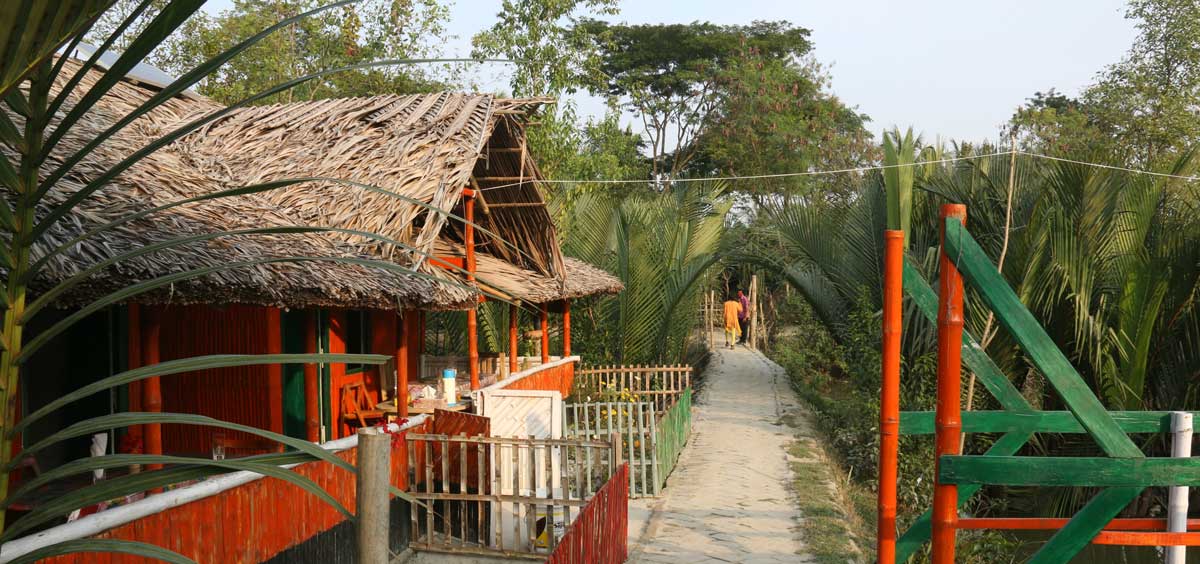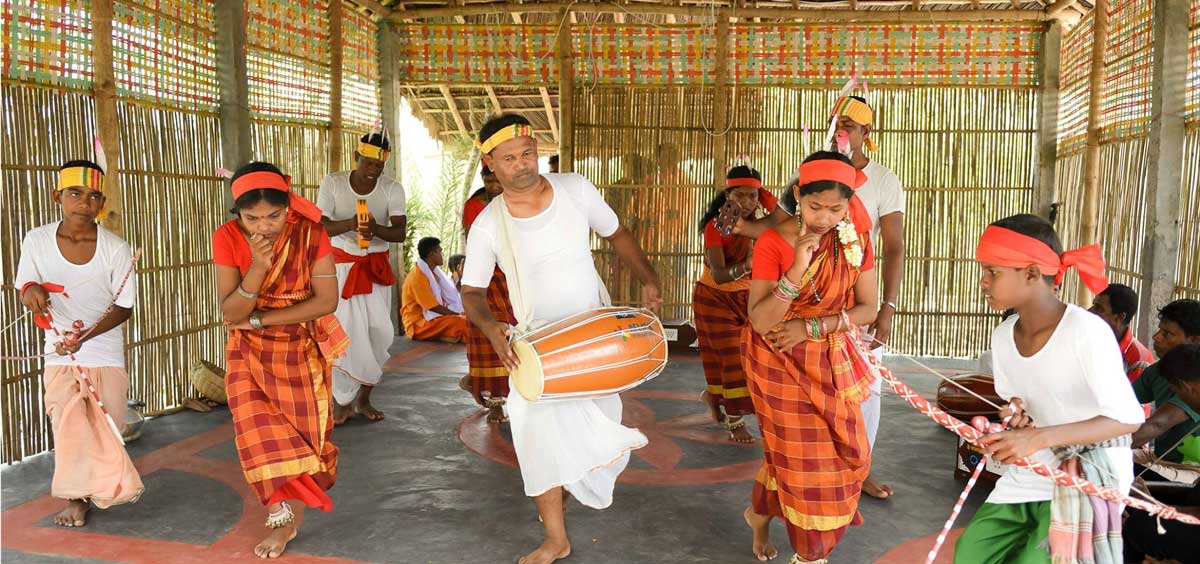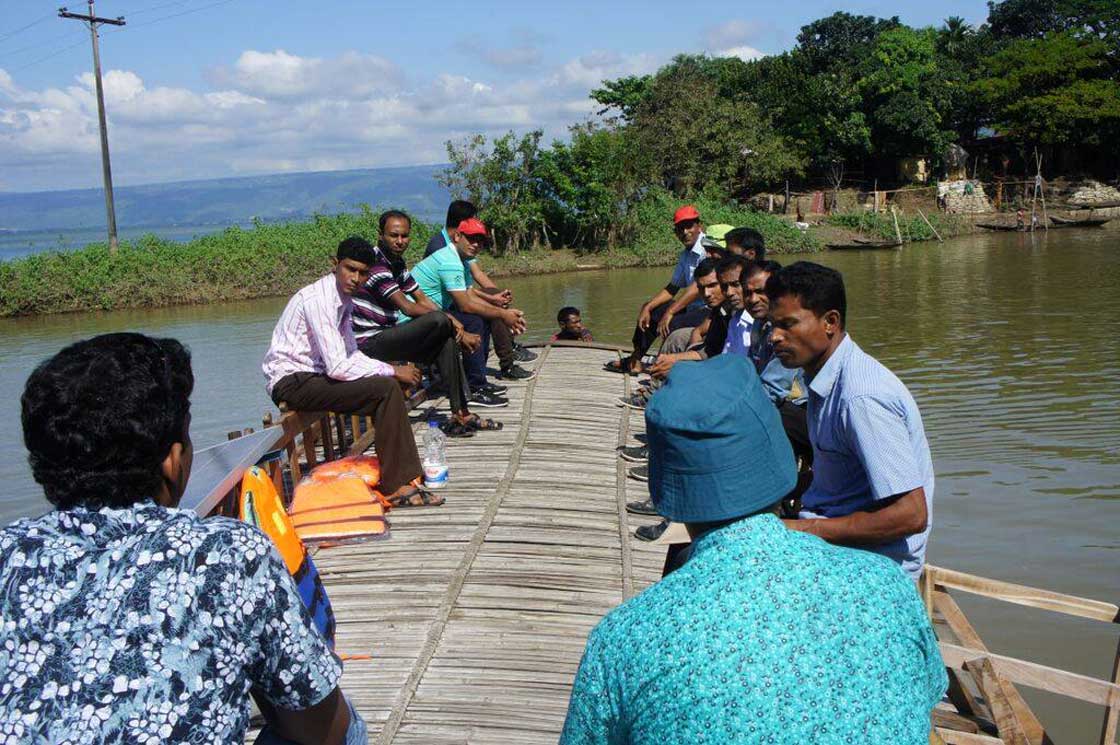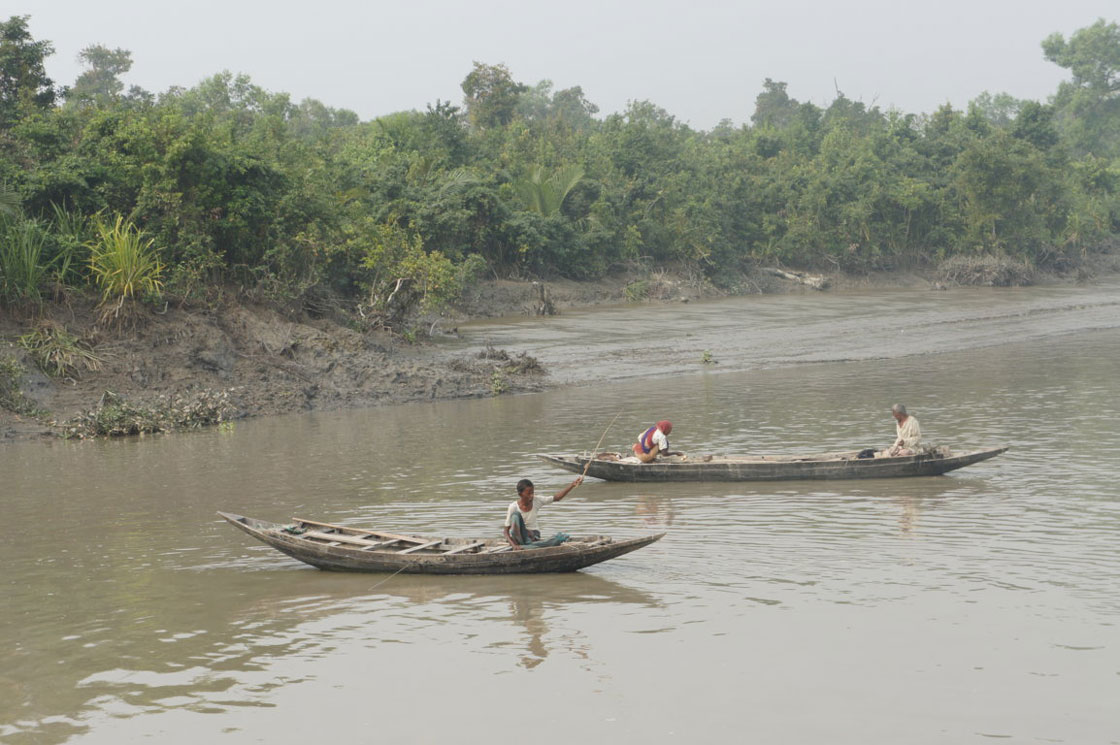For the third time that day, a small group of tourists pull up to the side of a bamboo-thatched storefront on the riverbanks of Bangladesh’s Sundarbans Mangrove Forest. It’s the high season for tourism. Despite the area’s remote location, a 3-hour trip from the country’s capital of Dhaka, foreign visitors embark on a short flight and two hour drive to visit cultural sites located along the fringes of the forest.
Dipping their paddles into the river’s deep waters, local guides propel tourists along the area’s winding river – a maze to an inexperienced navigator – pointing out the area’s unique flora and fauna in the processs. As the world’s largest continuous mangrove forest, the Sundarbans serve as Bangladesh’s coastal protection from cyclones and tidal surges, which have increased in frequency in recent years.
Today, the Sundarban’s boasts a thriving eco-tourism market. This is due in large part to Relief International’s intervention. Just a few years ago, the overexploitation of the forest’s natural resources nearly caused irreversible damage, threatening not only the area’s rich biodiversity but also the local communities that rely on these resources for their lives and livelihoods.
Local communities living along the fringes of the forest have long relied on the area’s natural resources in order to make ends meet.
It wasn’t too long ago that many used to live off the land.
Local communities living along the fringes of the forest have long relied on the area’s natural resources in order to make ends meet. Frequented primarily by local fishermen, the area remained largely underdeveloped and inaccessible to the rest of the world. With few alternatives for earning a living, particularly in the districts of Sathkhira, Khulna and Bagerhat, communities remained highly dependent on the forest’s resources for their lives and livelihoods.
However, this way of life has taken its toll on the forest’s natural resources. Despite a declaration by the Bangladeshi Government’s Department of Environment designating the Sundarbans as an Ecologically Critical Area, this sensitive site remains extremely fragile.
The Sundarbans was declared an UNESCO World Heritage Site in 1987. The portion of the refuge in Bangladesh was designated in 1997.
Shortly after Bangladesh’s Sundarbans Mangrove Forest was honored by UNESCO, Relief International inaugurated a two-year ecotourism project to safeguard the area’s vulnerable ecosystems while simultaneously launching new eco-friendly initiatives to lessen communities’ dependance on the forest’s resources.
“Life in this area is directly tied to the forest. Before this project, many families relied on fishing and small agricultural businesses, which are subject to the effects of pollution and climate-related shocks,” shares Nazrul Islam, Relief International’s Country Director for Bangladesh. “People also had to undertake unsafe journeys into the far reaches of the forest, facing tiger attacks and other dangers, because there are few other options to support themselves and their families.”
Linking livelihoods to the forest’s preservation
Today, tourists bounce from storefront to storefront selling traditional goods like locally harvested honeycombs and woven, geometric mats.
Many visitors to the Sundarbans are nature enthusiasts who want to escape the bustling activities of Bangladesh’s bustling cities for the solitude of the forest. These eco-tourism sites provide many opportunities for guests to explore the forest’s natural beauty, offering amenities that include cottages and tree houses to stay in, live dance and entertainment, and traditional meals native to the area. Some sites offer river tours, bird watching hikes and perhaps even the chance to catch a rare glimpse of the endangered Royal Bengal Tiger.
“Ownership of these sites is shared, and the revenue is distributed among community members, which ensures that these communities are still able to thrive,” shares Nazrul.
Nearly 1,000 tourists, mainly from international destinations, visited these eco-tourism sites from 2016 to 2017. While the physical tourism sites and other amenities are quite popular among tourists, the promotion and protection of the local culture is an even more valuable aspect of the program.
The community maintains organic farms and uses them to feed visitors traditional meals of crab, shrimp and fish. Performance troupes offer song and dance, often about Bon Bibi, the guardian spirit of the forest who is said to protect the people of the Sundarbans as they go about their work. The Karam Mura site offers home stays with Munda families, members of an indigenous group from India who claim to be the first settlers of the region. However, theirs is a history that is on the verge of being forgotten due to assimilation into the surrounding communities. Visitors to the Mangrove Forest are invited to learn more about their unique heritage and customs by spending a few days in their traditional homes fashioned from the forest’s wood and thatch.
Small shops offer visitors their pick of handmade wall hangings, embroidered cushion covers and other local crafted items for tourists to take home. The purchases also help to support the local economy, reducing communities’ dependence on the forest’s resources and preserving them for generations to come.
“These businesses are completely self-sustaining now. Community members operate, manage and build these eco-sites themselves,” shares Nazrul. “This program has the real potential to be replicated in other areas of Bangladesh and in the other fragile countries where Relief International works.”



